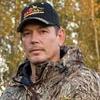Search the Community
Showing results for tags 'northern pike'.
-

Spearing lakes in Sherburne and Mille Lacs County?
BowHuntingAddict posted a topic in Bowfishing/Spearing - MN
I live in Princeton, MN and I'm wondering if there are any good spearing lakes around there. I'm originally from Wright County and I'm not to familiar with the area. Thanks! -

Pike Fishing Near Rochester
PatrickMidwest37 posted a topic in Fishing Minnesota - (Spring, Summer & Fall)
Hello, I'm from Chicago but I have a lot of family in Rochester. I come up for a week every few months and always do great fishing for Large mouth. I was hoping to find some spots to specifically target Pike that are within 30 mins of Rochester. I will be mainly shore fishing. Thank you -

DNR seeks to expand dialogue about state’s pike problems
Rick posted a topic in Outdoor Minnesota Talk - Keep it Civil
Excited to catch a big northern pike at the cabin near Brainerd, an angler casts a lure all week, yet, day after day, only has success in reeling in skinny, snake-like pike. In the Boundary Waters Canoe Area Wilderness, a large pike strikes bait not far from the rocky shore of an island. With the fish landed, the angler debates whether to keep it for dinner. On a lake bordered by farm fields, a teenager hooked on fishing has constant action from largemouth bass and panfish but long-ago gave up on casting fruitlessly for pike that are few and far between. These scenarios illustrate pike problems in different parts of Minnesota. In hopes of improving northern pike fishing, the Minnesota Department of Natural Resources wants to expand the dialogue with anglers and darkhouse spearers about the problems. One concept the DNR will discuss entails creating three pike fishing zones that could solve unique challenges with pike in northeastern, north-central and southern Minnesota. “There is no one-size-fits-all when it comes to effective pike regulations,” said Don Pereira, DNR fisheries section chief. “However, a zone concept, if enacted, could protect large pike in the northeast, increase pike populations in the south and eventually solve the problem of an over-abundance of small pike in north-central Minnesota.” In hopes of engaging anglers and spearers about the zone concept, the DNR has developed a Web page at www.mndnr.gov/pike that includes a video outlining the concept, frequently asked questions, a comment form and a space where people can sign up to receive information via email. During the coming summer months, the pike page will expand to include presentations on the idea and include times and places of meetings where people can hear more, ask questions and offer informal comments. Accommodating people who spear fish from a darkhouse is an important consideration, Pereira said. DNR has started dialog with leaders of the Minnesota Darkhouse & Angling Association to determine what regulations may work to conserve and improve their sport as well. “The DNR manages pike fisheries in more than 3,000 lakes,” Pereria said. “With good dialogue and support from anglers, spearers and all of our stakeholders, we should be able to improve pike fishing for those who are harvest-oriented as well as those keen about pursuing trophy northern pike.” So what is the pike problem in Minnesota? There isn’t just one problem – or one solution – because pike populations differ in various regions of the state. “Our primary objective is to manage pike as a fish for harvest. We’re asking anglers and spearers to consider a change in direction from the regulations we now have in hopes of making pike populations healthier and improving fishing in the future,” Pereira said. Northeast In the northeast, pike are present in relatively low numbers. They reproduce naturally. Although they grow slowly, they can grow quite large because relatively few anglers scatter limited fishing pressure across a large number of lakes. In this area, overharvest of large fish would be detrimental to pike populations. “In the northeast, there are large fish in the population,” Pereira said. “A zone concept could aim to protect these fish while continuing to allow opportunity to harvest smaller pike. A change such as this would not increase the pike population.” South In the southern area of the state, pike are less abundant and don’t reproduce as well as in the north. Southern Minnesota has high fishing pressure and a high harvest rate relative to the number of pike; however, these fish grow fast. “In southern Minnesota, we could increase pike numbers and harvest opportunities through supplemental stocking, a minimum size limit and a two-fish bag limit,” Pereira said. “Anglers in such a scenario would harvest fewer fish but they would be larger, and the total pounds of pike harvested would remain about the same. Anglers would be catching larger fish within a year or two.” North-central The north-central area is plagued by too many small pike, also known as the hammer-handle problem. There is moderate to high fishing pressure and high harvest of large and medium size pike. Pike grow slowly here. An over-abundance of small pike is the result. The overpopulated small pike eat large numbers of perch, which may have a negative effect on panfish populations. Overabundant pike also eat stocked walleyes, reducing the effectiveness of walleye stocking. And small pike eat proportionately more than big pike – for example, 10 one-pound pike eat significantly more than one 10-pound pike. “North-central Minnesota has the hammer-handle pike problem to the detriment of not only pike but also stocked walleye, perch and panfish,” Pereira said. “With any new regulations, we would hope to see a gradual but moderate increase in the average size of pike.” More information A zone concept, depending on what shape it takes, would be unlikely to create more trophy pike, as there are already special regulations that achieve that goal on individual lakes. The zone concept would leave existing special and experimental regulations in place. “We want to improve northern pike fishing in the entire state, but pike populations are vastly different in different areas of the state. DNR technical experts are working to determine which regulations may work best and will be talking with anglers and stakeholders this summer and fall,” Pereira said. Check www.mndnr.gov/pike for updated information about the proposal, including frequently asked questions, maps with zone locations and pike densities and information on how to comment. What do you think?- 11 replies
-
- 2
-

-
- pike problem
- new regulations
-
(and 5 more)
Tagged with:
